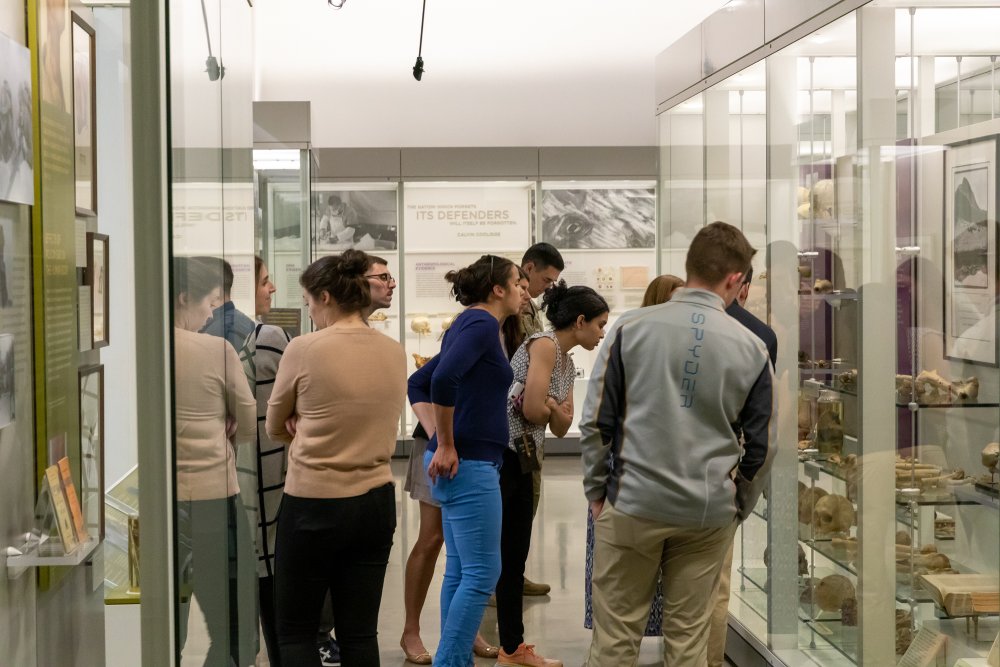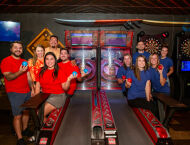Culture
 Photo courtesy of National Museum of Health and Medicine.
Photo courtesy of National Museum of Health and Medicine.
Off the Mall: National Museum of Health and Medicine
July 18, 2023 @ 10:00am
This bimonthly series highlights lesser-known museums in and around D.C.
Located in a blocky modernist building off Silver Spring’s beaten track, the National Museum of Health and Medicine offers an unflinching inside look at the human body. Trigger warning: We’re talking displays of skulls splintered from ballast, guns and sabers; massive hairballs extracted from the stomachs of compulsive hair chewers; and early surgical tools that will send a shiver up your spine.
The museum’s founding is as interesting as its artifacts. In 1862, as the Civil War body count mounted (roughly half a million American soldiers by the war’s end), Surgeon General William Hammond established its predecessor, the Army Medical Museum, to aggregate specimens for military medical and surgical research. Hammond directed medical officers in the field to collect “specimens of morbid anatomy together with projectiles and foreign bodies removed” and send them to the newly founded museum.
Museum staff were hands-on in the collection process. Its first curator, John Brinton, visited mid-Atlantic battlefields and solicited contributions from Union Army doctors, while museum staff photographed wounded soldiers depicting gunshot wounds, amputations and other surgical procedures. These original specimens and artifacts, including 500 killer bullets and shrapnel, are still on display today, along with early surgical tools that will have you counting your lucky stars you were born on this side of the 1900s.
Today the National Museum of Health and Medicine boasts more than 25 million artifacts, including the world’s largest microscope collection. Its collection of “pathological tissues” is also one of the largest on the planet. There seems to be more space dedicated to death and disease than health and medicine, but there are silver linings too: The pathology collection includes examples of conditions rarely found today because of medical advances. The museum has your organs covered, from an informative, interactive display on the brain to prosthetics through the ages, including heart valves and skin tissue engineering. The space also showcases curiosities like the intact skeleton of Able, the first monkey to make it to space and back alive.
Who It’s For:
“M*A*S*H” and “Grey’s Anatomy” fans, pre-med students, Civil War history buffs, lovers of the macabre
Don’t Miss:
Artifacts from President Lincoln’s assassination, including the lethal bullet, a lock of his hair, fragments of his skull and a medical probe used by Army Surgeon Joseph K. Barnes during his ultimately unsuccessful treatment. Staff of the Army Medical Museum played an integral role in the care of Lincoln during his last hours, conducting the postmortem investigation and documenting the results.
Have a gander at the poison gas posters in the bathrooms, part of a public awareness campaign to sensitize citizens to the tell-tale smells of gases during World War I (the more you know: phosgene smells like musty hay, while lewisite smells like geranium.)
Fun Facts:
Major Walter Reed – for whom the nearby military medical center is named – was an early curator of the museum. During Major Reed’s tenure, museum staff helped discover the cause of yellow fever.
Wartime surgeons would put specimens in ale barrels with whiskey and a chlorine solution and bury the barrels until museum staff could come collect them.
Tips:
Use the museum’s browser-based app (nmhm.stqry.app) for facts and quizzes to enhance your visit. The app’s Highlights Tour covers 16 stops, from the twinkling fiber optic museum logo featuring the constellation Microscopium to a plasticated heart. Plastination is a method of preserving anatomical specimens that involves removing the water and fat from tissue cells and replacing them with a polymer.
The museum is generally appropriate for children, but be prepared for some of the displays – facial reconstruction, infant skeletons, bones infected from gunshot wounds and plasticated reproductive parts – to raise questions from little ones.
Operated by a special division of the U.S. Army, the National Museum of Health and Medicine is free and open Wednesday through Sunday from 10 a.m. to 5:30 p.m. Free parking on site. Visit their online exhibits and learn more about their programs here.
National Museum of Health and Medicine: 2500 Linden Ln. Silver Spring, MD; medicalmuseum.mil // @medicalmuseum
Want to learn more about the many ways to experience life in D.C.? Join the District Fray community, where you’ll gain first access to exclusive events in the District. Become a member and support local journalism today.







